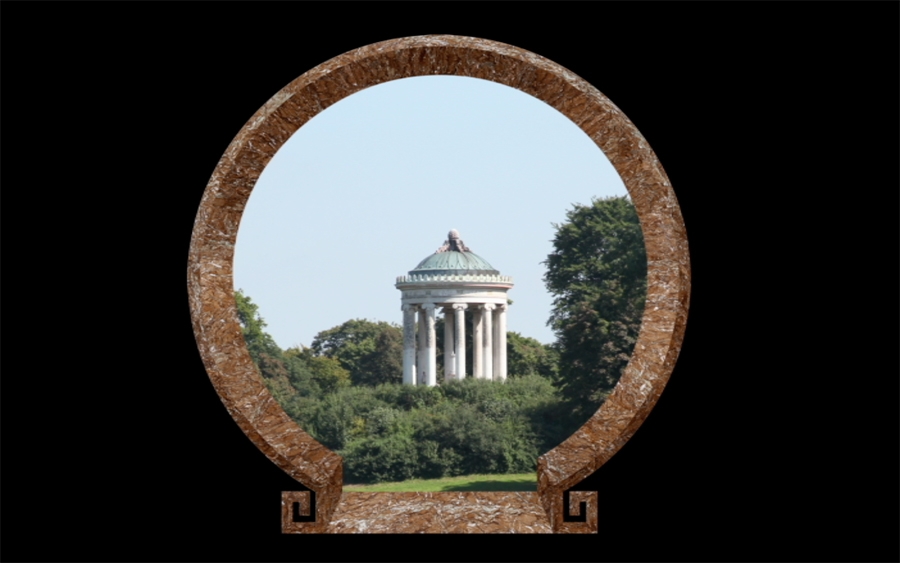Situated in an old walk-up apartment block in a quiet suburban neighbourhood, Gary Carsley’s latest exhibition lends another sense to the notion of the contemplation garden. Here an IKEA Gilbert chair – selected for its playful link to Gilbert & George, who in Carsley’s words “make works that allowed the viewer to be with and in the art” – sits in front of a round Chinese garden gate, Astria Portia 4 (Moongate/Stargate) (all works 2014); this lifesize lambda monoprint and chair is situated directly opposite another, similar gate, but one with a changing projection of various gardens, Moongate Singapore Chinese Garden. The former, taken from a gate at the Chinese Scholar’s Garden on Staten Island, contains a view of the pagoda from Kew Gardens in London, while across the gallery 26 changing images from different Chinese gardens around the world (eg, San Francisco, Brisbane, Singapore, Bangkok) are projected onto a Singaporean moongate. On the flanking walls are four lifesize silhouettes of garden statuary, cut out of store-bought wallpaper. The statues are selected mostly from the Chinese garden in Singapore and one from Potsdam; they depict legendary heroes from ancient Chinese culture (Hua Mulan, Yue Fei and Guan Yu). The wallpaper is from a Chinese copy of a chinoiserie interior from Brighton Pavilion that dates from approximately 1819 – the founding year of Singapore.
Larger versions of this project, Sciencefictive, have been shown at the Institute of Modern Art in Brisbane, for which it was originally commissioned, and the Kunstverein in Ulm, Germany. There, as in Singapore, there were ‘Stargates’, the name taken from the eponymous sci-fi fi lm and TV series about space travel through wormholes, which Carsley elides with ‘moongates’, and both together signify portals to other realities or thinking. Carsley’s work takes place at several intellectual intersections, not to mention hints at travelling to diff erent times and spaces. In his words, it is a “mappa mundi” that connects Chinese cultures and diasporas across the world. Given the historical references in most Chinese gardens, it would also refer to the imagery of diff erent eras – the statues are a good example of this. For Carsley it seems that the Chinese garden itself is a signifi er of this mass movement of culture.
So far so artificial, and yet this show’s topic is nature, or at least a window onto nature. Carsley seems to be asking if nature, or more precisely the garden, can be a construction of the mind. Or at least to suggest that it is an entirely human artifice. But can this artifice still bring one back to a certain notion of contemplation? It would seem that he connects cultivating gardens and vistas as a metaphor for art and artifice, rather than an experience of nature. He may be also suggesting that art is another kind of cultural construction akin to the garden, and thus functions like nature. The chair here is an object to sit on, and viewers are encouraged to do so, and hence it creates the possibility for some sort of meditation, or at least a moment of thoughtfulness. This would seem to suggest that the gallery itself is another kind of garden; which leads us back to the idea of contemplation… Perhaps in the end one doesn’t really need a walk in the park.
This article was first published in the April 2015 issue.
